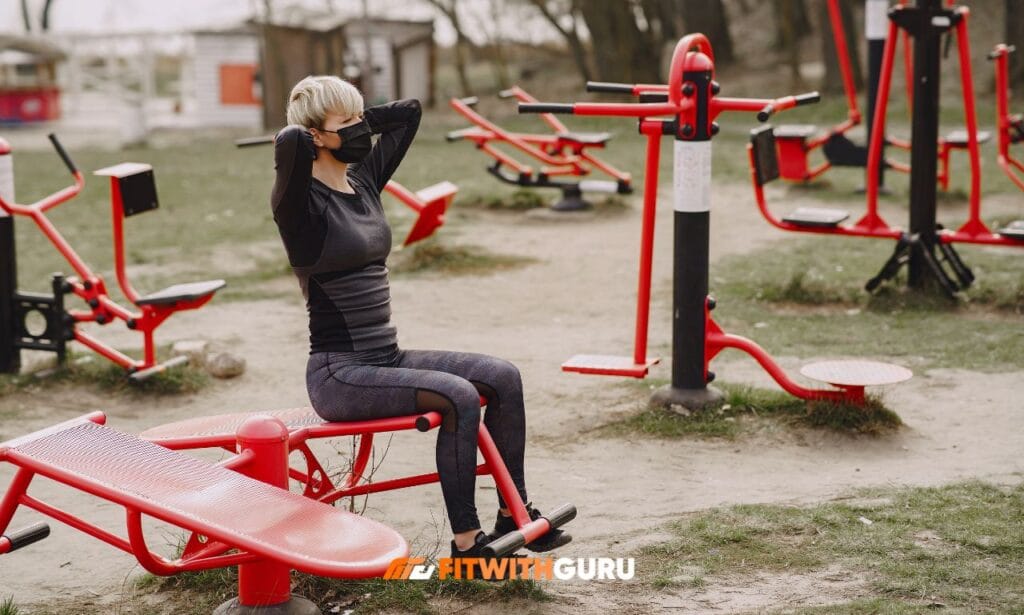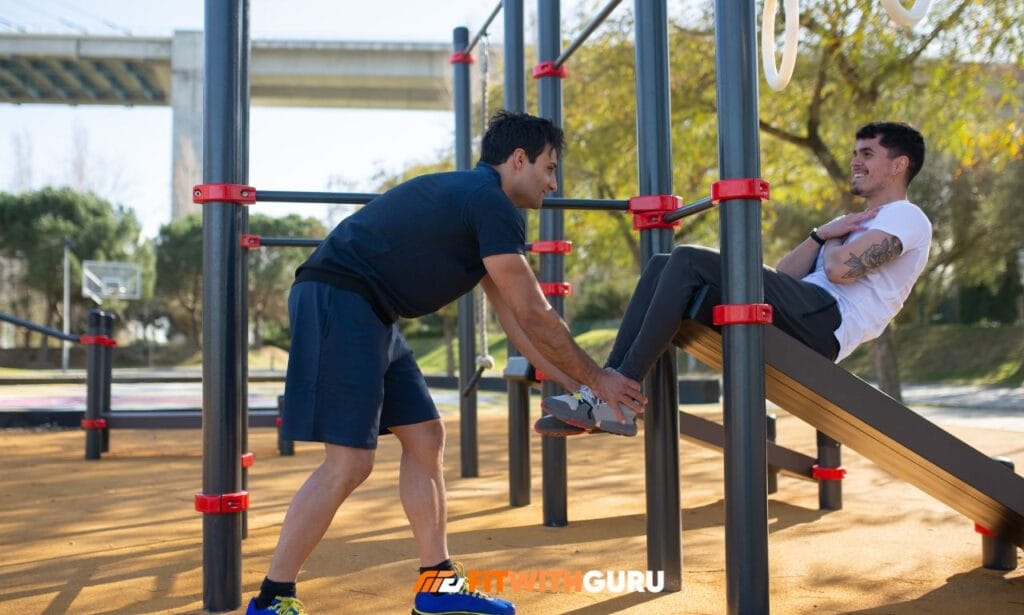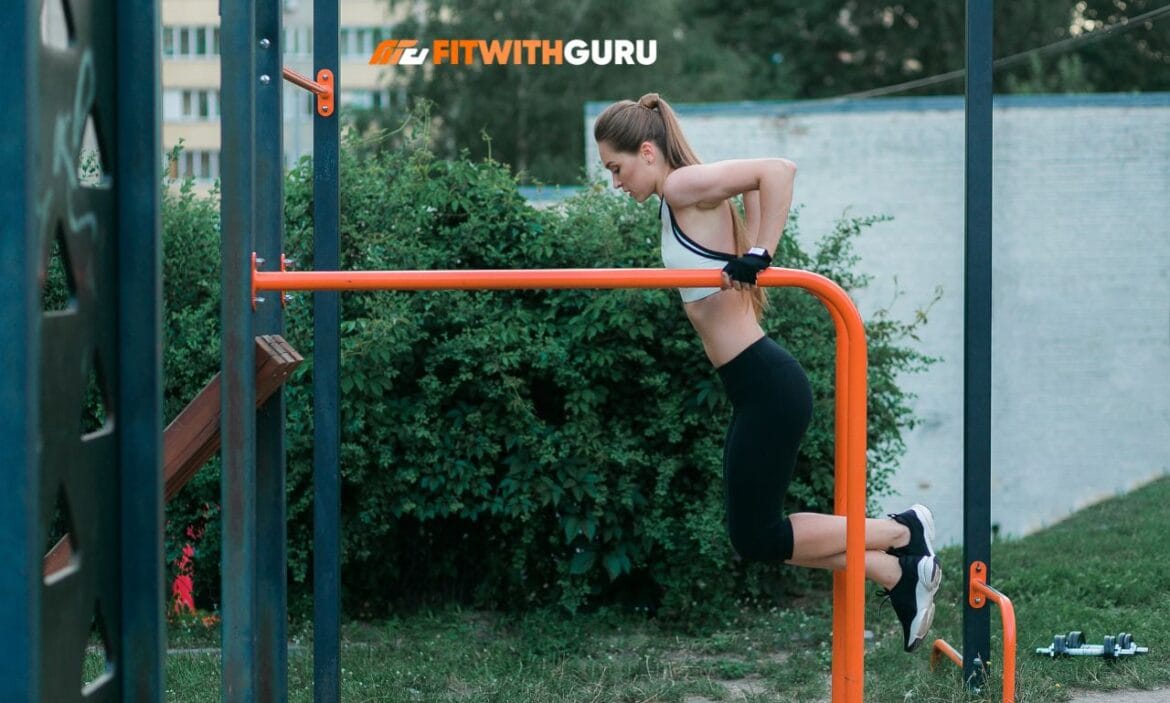An outdoor calisthenics gym is transforming how people approach fitness in 2025, offering free access to strength training while connecting you with nature and community. Picture this: early morning sunlight, fresh air filling your lungs, and your body moving through pull-ups and dips on solid steel bars—all without paying a single dollar.
These public fitness spaces are popping up in cities worldwide, proving that building strength doesn’t require expensive gym memberships or fancy equipment.
What Makes an Outdoor Calisthenics Gym Special
Unlike regular playgrounds, an outdoor calisthenics gym features specialized equipment designed specifically for bodyweight strength training. You’ll find pull-up bars at varying heights, parallel bars for dips, monkey bars for grip strength, and Swedish walls for core work. The best part? These spaces operate 24/7 with no membership cards, sign-in sheets, or crowded locker rooms to navigate.
Traditional parks might have a single pull-up bar, but a proper calisthenics gym outdoor setup offers multiple stations that allow progressive training and workout variety. Weather-resistant materials like galvanized steel ensure durability through rain, snow, and intense summer heat, making these facilities reliable year-round training partners.
Essential Outdoor Calisthenics Gym Equipment
When you visit a well-designed outdoor calisthenics gym, you’ll encounter pull-up bars in multiple configurations, parallel bars for dips, monkey bars for grip training, and Swedish walls for advanced movements. Some facilities include incline benches, low bars for rows, multi-height platforms for jumps, and even ring stations for gymnastic-style training.
The variety of outdoor calisthenics gym equipment allows beginners to start with basic movements while giving advanced athletes enough challenge to keep progressing. I’ve witnessed complete transformations on these simple steel structures—people who couldn’t do a single pull-up eventually performing muscle-ups and front levers within months of consistent training.

Benefits Beyond Building Muscle
Training at an outdoor calisthenics gym delivers advantages indoor facilities cannot match. The financial benefit speaks loudest—you save $300 to $1,200 annually compared to commercial gym memberships. Research shows outdoor exercise increases vitamin D production, improves mood through nature exposure, and enhances mental health more effectively than indoor workouts.
The social aspect surprises most newcomers. Outdoor fitness communities form naturally as regular attendees share techniques and push each other to improve. Your workout schedule becomes truly flexible with no closing times, and the functional strength you build transfers directly to real-world movements like climbing and carrying.
Finding or Building Your Facility
Finding an existing calisthenics gym outdoor starts with Google Maps searches using terms like “outdoor fitness park” or “calisthenics park near me.” Apps like Calisthenics Parks and Street Workout Finder maintain databases of outdoor training spots worldwide. Check local community centers, university campuses, and waterfront areas where these installations frequently appear.
If your area lacks facilities, consider organizing community support to petition local government for installation. Building outdoor calisthenics gym plans from scratch costs between $5,000 to $25,000, depending on equipment quality. Crowdfunding or local business sponsorships can offset costs while building community investment in the project.
Progressive Training Programs
Beginners should start with assisted pull-ups using resistance bands, knee push-ups, box step-ups, and 20-30 second plank holds. As strength develops over 4-6 weeks, progress to regular push-ups, inverted rows, and jump squats. Advanced practitioners work toward muscle-ups, front levers, handstand push-ups, and human flags.
A simple beginner circuit includes 5-8 assisted pull-ups, 10-15 push-ups, 15-20 body squats, and 30-second planks, repeated three times with 90-second rest periods. The beauty of outdoor calisthenics gym equipment is that progression happens naturally—as exercises become easier, you adjust leverage or attempt harder variations.
Training Through All Seasons
Training at an outdoor calisthenics gym through different seasons requires strategic planning but remains feasible in most climates. Summer heat demands early morning or evening sessions with increased hydration, while winter workouts require proper layering with moisture-wicking base layers and wind-resistant outer shells.
Light rain doesn’t stop training—it actually makes grips more challenging, building forearm strength. However, avoid metal bars during thunderstorms and skip sessions when ice creates genuine danger. Your body adapts remarkably well to temperature variations when you maintain consistency rather than letting weather become an excuse.
Community and Social Connection
The calisthenics gym outdoor environment naturally fosters community in ways traditional gyms cannot replicate. Regular attendees develop informal training groups where experienced athletes mentor beginners. I’ve seen teenagers teaching retirees their first pull-up, and professionals learning handstands from college students—age and background matter less than shared dedication.
This democratization of fitness builds social capital in neighborhoods, as people from different economic backgrounds train side by side. Unlike competitive gym environments, outdoor calisthenics culture emphasizes personal progress and helping others achieve their goals without income requirements or fitness tests—just show up and participate.
Safety and Injury Prevention
Always warm up with 5-10 minutes of light cardio and dynamic stretching before strength exercises. Start every new movement at the easiest variation and only progress when you can complete 3 sets of 10-12 reps with perfect form. Shoulder injuries represent the most common problem, usually from attempting advanced movements before building adequate foundation strength.
Listen to the difference between productive muscle burn and sharp pain that signals injury. Inspect outdoor calisthenics gym equipment before each session for loose bolts or structural damage. Recovery matters as much as training—take at least one rest day between intense sessions for the same muscle groups.

Frequently Asked Questions
What equipment do I need to start training at an outdoor calisthenics gym?
You need nothing beyond comfortable athletic clothing and proper footwear to begin training at an outdoor calisthenics gym. The facility provides all necessary equipment including bars, benches, and platforms. Optional additions include resistance bands for assisted exercises, workout gloves for grip protection, and liquid chalk for humid weather conditions.
Can beginners really use outdoor calisthenics gym equipment effectively?
Absolutely—every exercise has scalable variations. Can’t do a pull-up? Start with dead hangs, then negative pull-ups, then band-assisted versions. Push-ups too difficult? Begin with wall push-ups, progress to incline push-ups, then floor versions. The outdoor calisthenics equipment naturally accommodates all fitness levels through different bar heights and support structures.
How long does it take to see results from outdoor calisthenics trainings?
Most people notice strength improvements within 2-3 weeks of consistent outdoor calisthenics gym training. Visible muscle definition appears after 6-8 weeks when combined with proper nutrition and 3-4 weekly sessions. Advanced skills like muscle-ups require 6-12 months of dedicated practice for most athletes starting from beginner levels.
Are outdoor calisthenics gyms safe for training alone?
Training alone at an outdoor calisthenics gym is generally safe when following proper progression. Start with basic exercises you can confidently perform and gradually advance. Training during daylight hours in well-populated parks provides additional security. Many users find solo training helps them focus better, though occasional training partners add motivation for advanced movements.
What’s the best time of day to train at an outdoor calisthenics gym?
The optimal time for calisthenics gym outdoor training depends on your schedule and weather. Early morning (6-8 AM) offers cooler temperatures and fewer crowds. Evening workouts (5-7 PM) relieve work stress but may be busier. Consistency matters more than timing—choose a schedule you can maintain long-term rather than chasing the theoretical “perfect” workout window.
Conclusion
The outdoor calisthenics gym movement represents accessible, functional, and community-oriented training that anyone can embrace regardless of economic status. These steel structures democratize strength training, proving that building an impressive physique requires dedication rather than expensive memberships.
Whether you’re starting your fitness journey or you’re an experienced athlete seeking freedom from crowded gyms, outdoor calisthenics offers a liberating path forward. Find your nearest facility, show up consistently, and discover what your body can truly accomplish through the simple act of moving your own weight through space.

